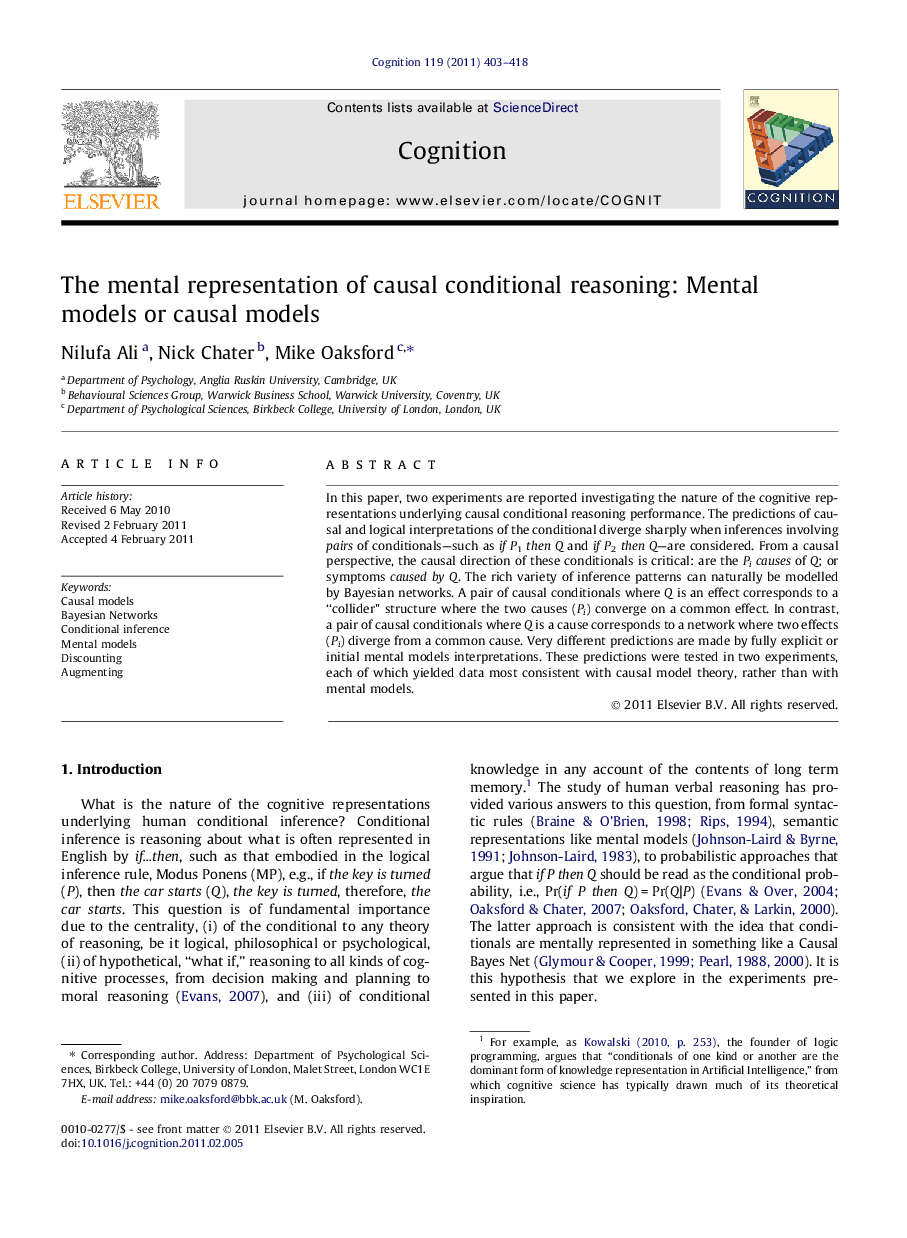| Article ID | Journal | Published Year | Pages | File Type |
|---|---|---|---|---|
| 10457900 | Cognition | 2011 | 16 Pages |
Abstract
In this paper, two experiments are reported investigating the nature of the cognitive representations underlying causal conditional reasoning performance. The predictions of causal and logical interpretations of the conditional diverge sharply when inferences involving pairs of conditionals-such as if P1then Q and if P2then Q-are considered. From a causal perspective, the causal direction of these conditionals is critical: are the Picauses of Q; or symptoms caused byQ. The rich variety of inference patterns can naturally be modelled by Bayesian networks. A pair of causal conditionals where Q is an effect corresponds to a “collider” structure where the two causes (Pi) converge on a common effect. In contrast, a pair of causal conditionals where Q is a cause corresponds to a network where two effects (Pi) diverge from a common cause. Very different predictions are made by fully explicit or initial mental models interpretations. These predictions were tested in two experiments, each of which yielded data most consistent with causal model theory, rather than with mental models.
Related Topics
Life Sciences
Neuroscience
Cognitive Neuroscience
Authors
Nilufa Ali, Nick Chater, Mike Oaksford,
